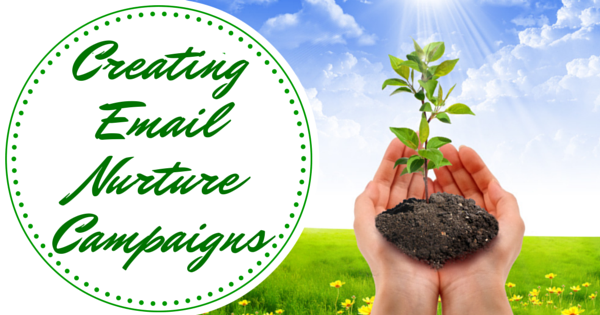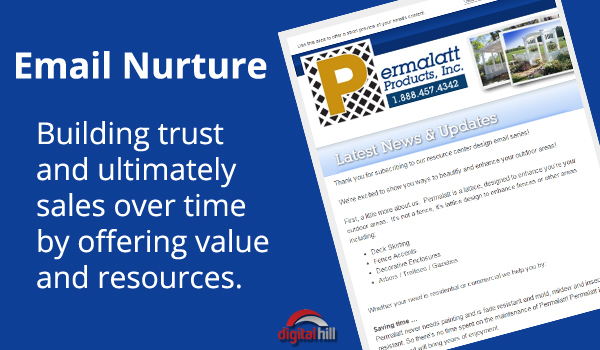Creating Email Nurture Campaigns
Turning website visitors into leads is the first step in building a successful online business. However, once you have those leads, you need to nurture them to turn them into buyers. Visitors that hand over their email details are some of the easiest to convert, since they have already indicated they are interested in what you have to say.
Creating email nurturing campaigns can be intimidating, at first. There are several issues to consider … What is your email list privacy policy? What 3rd party email service will you use? MailChimp, Constant Contact or ??? How many emails will you send during the nurture campaign and what will those emails say? These tips will help you to run a successful campaign.
What Makes Good Email Nurture Campaigns?
A good campaign targets your audience and keeps them interested. Your goal with your email campaign is to keep your brand message at the forefront of your customer’s minds for an extended period of time. With each message, you build up goodwill and brand recognition. You aren’t aiming to sell with every email you send. Many messages will be educational, designed to create a need for your product or service, or answer a question. Over time, you will gradually build up interest until you reach the point where they buy.
Ideally, you should be able to separate your leads by industry, purchase intent, existing customers vs new subscribers, and, if you operate in the B2B space, people who have purchasing power versus those who simply advise on purchases. This will help to run even more targeted marketing campaigns.
How Many Emails Should You Send?
The number of emails you send and the frequency with which you send them will depend on the type of person you are targeting, and the nature of the product you are selling. In the case of high-value products, it can take several months or even years to lead a buyer through the conversion funnel. This should be taken into account when designing a nurture campaign. The campaign should last for the average duration of a prospective buyer’s decision-making process.
Make sure that you send out emails consistently during the nurture campaign. Front load the funnel, sending emails frequently during the first few weeks of the buyer signing up for your emails, then slowing down communications over time. However, even when you send emails slowly, you should send on a consistent schedule. This will help to ensure that your subscribers do not forget they joined your list, and will prevent your emails from getting marked as spam.
Content Matters
Your emails should be clear, concise, easy to read, and written with your target audience in mind. If you’re sending to someone “in the trenches”, pitch the practical benefits. If you are emailing managers, make it clear that the product or service will improve their team’s efficiency and offer good ROI.
Make sure that your emails are easy to read. Consider offering both HTML and text-only versions of your emails so that everyone can receive them. Corporations may have heavy firewalls and spam filters that keep HTML emails from being delivered. By offering text versions of email, your deliverability rate will improve for B2B clients.
Grow Your Email List
The easiest way to grow your email list is to offer a free gift such as eBooks, whitepapers and reports to people who subscribe. You can also offer discount vouchers, and promote your lists to customers who purchase from your shop. Segregate lists so existing customers get different content than people who have not yet bought from you. This way you have an opportunity to upsell or add-on to a sale with an existing customer list.
It may take months to see results from your email lists, but it’s worth the effort. The list will help you to create customers from those who would have seen your brand once and then forgot it. Once someone has subscribed to your list, they become much more likely to convert to a customer.


